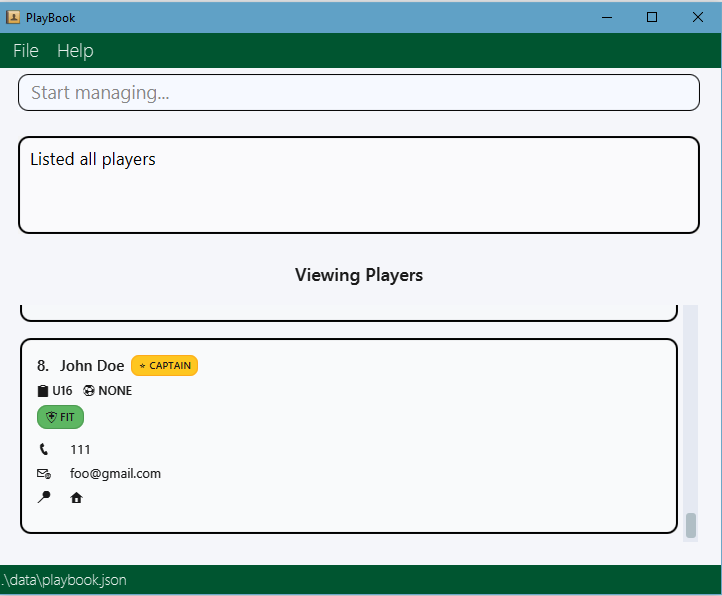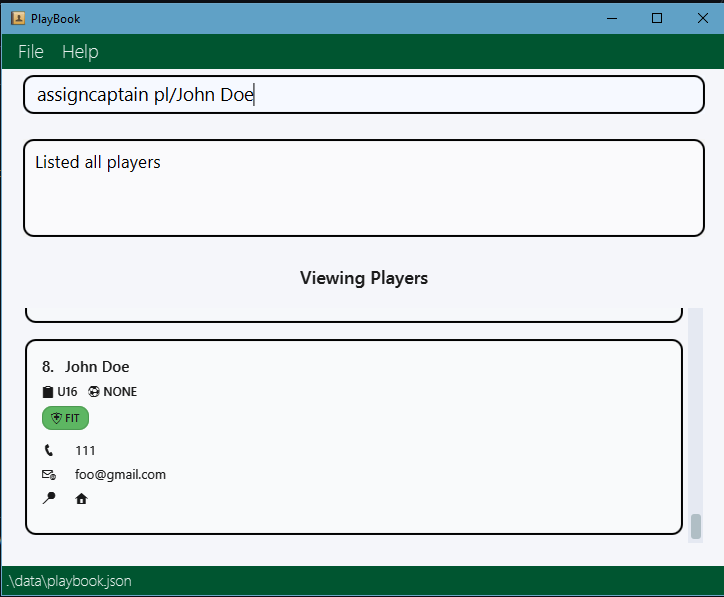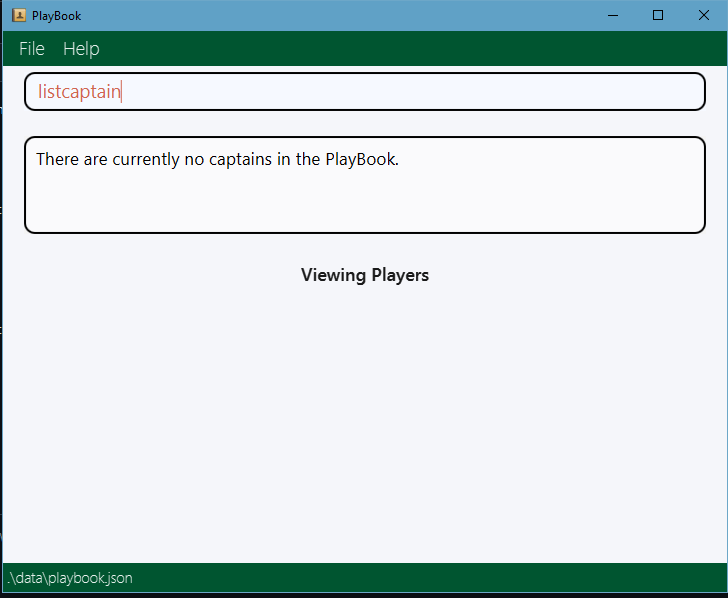Bug Report: `assigncaptain` Command Issue
Hey everyone! Let's dive into this bug report detailing an issue with the assigncaptain command. It seems like there's some unexpected behavior when trying to assign a captain within the application. This report will walk you through the steps to recreate the issue, explain what's happening, and highlight the impact. We'll also discuss why this is a severity.Medium and type.FunctionalityBug, and what it means for the user experience. So, let's break it down and see how we can get this fixed!
Unintended Behavior of assigncaptain Command
The core issue here is that when you use the assigncaptain command on a person who should be designated as the captain, the application doesn't consistently recognize them as such. This can lead to confusion and problems with features that rely on the captain role. It’s like trying to give someone a key to the captain's quarters, but the door still doesn’t open for them. This inconsistency creates a frustrating user experience and undermines the reliability of the application. Let's look at the specific steps to reproduce this bug so you can see exactly what's going wrong. We need to ensure that the captain is correctly assigned and that the application reflects this assignment accurately across all features. This is crucial for maintaining the integrity of the user roles and permissions within the system. If the assigncaptain command doesn't work as expected, it affects the overall functionality and can disrupt team management and coordination.
Steps to Recreate the Issue
To reproduce this bug, follow these steps:
-
Initial Captain Assignment: First, make a person, say "John Doe," the captain using the appropriate command or interface. This sets the initial state where John Doe is recognized as the captain.
- Here's an image showing John Doe initially set as captain:

-
Run the
assigncaptainCommand: Next, execute theassigncaptaincommand on the same person, John Doe, using the commandassigncaptain pl/John Doe. This is where the problem starts to surface. -
UI Display Inconsistency: After running the command, check the user interface (UI). You'll notice that John Doe is not being treated as the captain in the UI, even though the command was executed to assign them as such.
- Here's how the UI looks after running the command, incorrectly showing John Doe not as the captain:

-
Verify with
listcaptain: To further confirm the issue, use thelistcaptaincommand. This command should list the current captain, but it will not show John Doe as the captain.- The output of
listcaptainshows that John Doe is not listed as the captain:

- The output of
By following these steps, you can consistently reproduce the bug where the assigncaptain command fails to properly assign the captain role within the application. This replication is crucial for developers to understand and address the issue effectively. It highlights a clear discrepancy between the command's execution and the application's state, which needs immediate attention.
Expected vs. Actual Behavior
So, what should happen versus what's actually happening? That’s the key to understanding this bug. When we run the assigncaptain command, we expect the application to recognize the designated person as the captain across all features and interfaces. This means the UI should reflect the change, and commands like listcaptain should correctly identify the assigned individual. Think of it like a successful promotion at work – everyone should know and the system should reflect the new role.
However, the actual behavior is quite different. The command seems to execute without errors, but the application doesn’t fully register the change. The UI fails to update, and the listcaptain command doesn’t list the assigned person as the captain. It’s as if the promotion was announced, but the employee’s access badge still doesn’t work for the new office. This discrepancy creates a disconnect between the user’s action and the application’s response, leading to a frustrating and confusing experience. This is a critical point because it directly impacts user trust and confidence in the system. If the application doesn’t behave as expected, users may lose faith in its reliability and look for alternative solutions. Therefore, addressing this inconsistency is vital for maintaining a positive user experience.
Impact of the Bug
This bug isn't just a minor inconvenience; it has a real impact on how users interact with the application. When the assigncaptain command doesn't work as expected, it can lead to several issues:
- Confusion and Frustration: Users may become confused and frustrated when they assign a captain, but the application doesn't reflect this change. It's like trying to turn on a light switch, but the light doesn't come on – you start to wonder what's going wrong.
- Incorrect Role Permissions: Features that rely on the captain role may not function correctly. For example, if the captain has special permissions, these permissions won't be applied if the application doesn't recognize the assigned captain.
- Data Integrity Issues: The discrepancy between the assigned captain and the application's state can lead to data integrity issues. If the system isn't accurately tracking who the captain is, it can cause problems with reporting, auditing, and other important functions.
- User Trust Erosion: Perhaps most importantly, this bug erodes user trust in the application. If basic commands don't work as expected, users may lose confidence in the system's reliability and look for alternatives.
These impacts highlight why this is classified as a severity.Medium bug. While it may not be a complete showstopper, it significantly affects the user experience and can lead to data inconsistencies. Addressing this bug is crucial for ensuring the application's usability and trustworthiness.
Severity and Type Labels: Understanding the Classification
This bug has been labeled as severity.Medium and type.FunctionalityBug. Let's break down what these labels mean:
severity.Medium: This indicates that the bug has a moderate impact on the application's functionality and user experience. It's not a critical issue that completely prevents users from using the application, but it does cause significant problems and requires timely attention. Think of it like a pothole on a busy road – it doesn't stop traffic, but it does slow it down and can cause damage if not fixed.type.FunctionalityBug: This means that the bug is related to a core function of the application not working as intended. In this case, theassigncaptaincommand, which is a key part of managing user roles, is failing to perform its function correctly. This type of bug directly affects the application's ability to deliver its intended purpose.
These classifications help prioritize bug fixes. Bugs with higher severity and those affecting core functionality are typically given higher priority to ensure the application remains usable and reliable. By understanding these labels, developers can better allocate resources and address the most critical issues first.
Conclusion: Time to Fix This Captain Conundrum!
In summary, the assigncaptain command's unintended behavior is a significant issue that needs to be addressed. The steps to recreate the bug are clear, the impact is substantial, and the classification as a severity.Medium type.FunctionalityBug underscores its importance. We've seen how the discrepancy between expected and actual behavior can lead to user confusion, data integrity issues, and a loss of trust in the application. Let's get this bug squashed so that assigning captains is smooth sailing from here on out! By fixing this, we’ll ensure a more reliable and user-friendly experience for everyone. This bug fix is not just about correcting a command; it's about upholding the integrity of the application and ensuring a positive user experience. So, let’s make it a priority and get it resolved quickly!